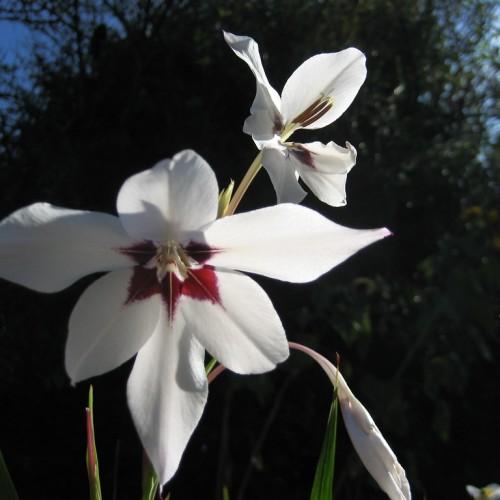
peacock gladiolus
Gladiolus murielae
Cycle:
Perennial
Watering:
Average
Hardiness Zone:
7 - 10
Flowers:
Flowers
Sun:
Full sun
Leaf:
Yes
Growth Rate:
High
Maintenance:
Moderate
Drought Tolerant:
Yes
Salt Tolerant:
Yes
Care Level:
Medium
watering
Peacock gladiolus need to be watered thoroughly whenever the soil begins to feel dry to the touch, usually about once every week or 2. Water these plants slowly and evenly for the best results. Be careful not to water the foliage, as this may lead to fungal problems. When watering, give the plant enough water for the moisture to reach the roots. Allow the soil to dry out slightly between waterings. During cold months, when the plant is dormant and not actively growing, water less frequently. If the soil seems dry, you can give it a deep soak once every 2-3 weeks.
sunlight
Peacock gladiolus (Gladiolus murielae) prefers full sun for optimum flowering. It should receive 4 to 6 hours of full sun each day, morning sun being the best. It is best planted in a location that receives some afternoon or evening shade during the hottest months of the summer. This is to give the plant some relief from the intense temperatures. Too much sun can result in the plant becoming stressed and produce fewer blooms.
pruning
The peacock gladiolus (Gladiolus murielae) should be pruned during the spring after blooming has finished for the season. To keep the plant healthy, it should be pruned back by about 1-third of its total length. This helps to encourage vigorous growth and flowering. It is important to remove any dead or decaying foliage as well as any weak or diseased stems. This will help to keep the plants overall health and vitality. Additionally, it is recommended to cut the flower stems just below the final flowering point, this will help to improve the overall flowering performance of the plants next season.
